Crafting the Perfect IPA: A Unique Recipe for Beer Enthusiasts
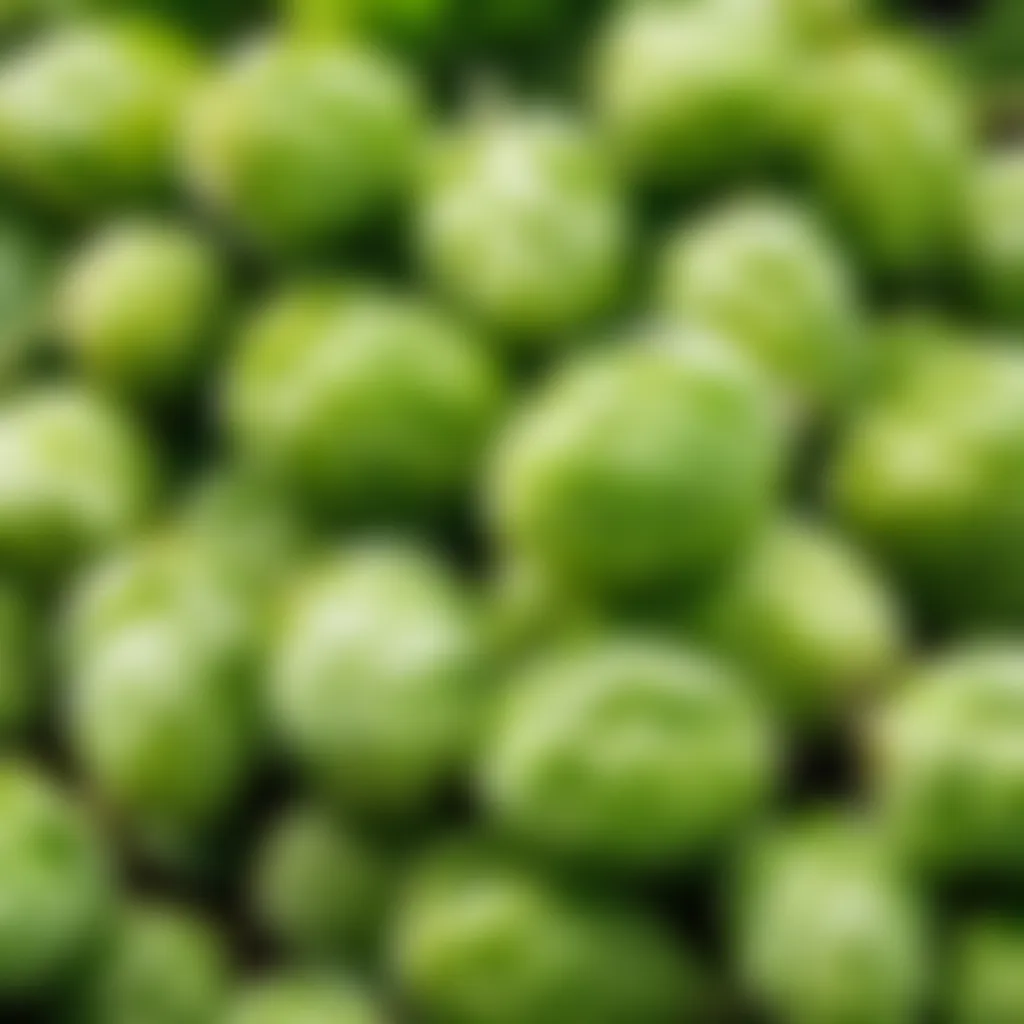
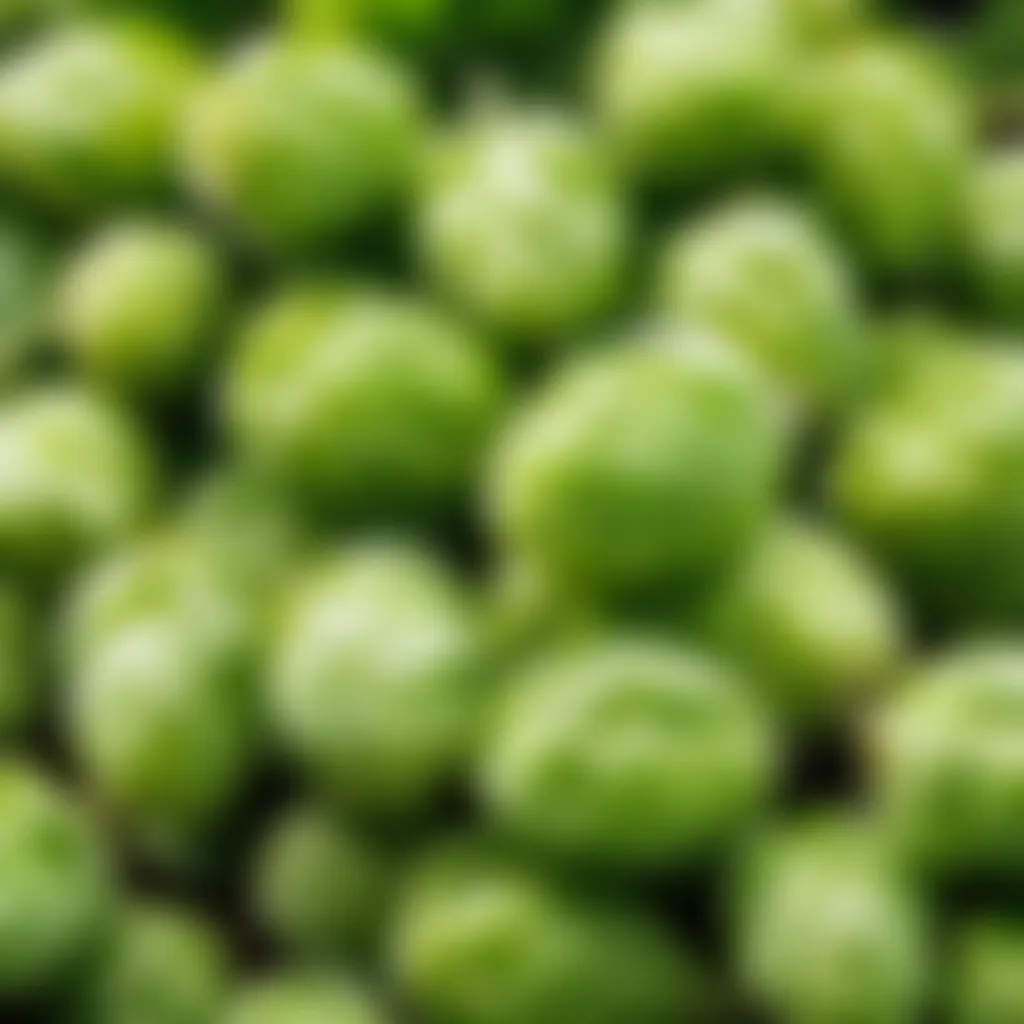
Intro
Brewing beer, particularly an India Pale Ale (IPA), is an art that marries science with creativity. The precision required in ingredient selection, the finesse in brewing techniques, and the passion for flavor profiling all come together to craft a brew that can tantalize the taste buds. For those who consider themselves beer enthusiasts, a personal journey into brewing your own IPA could be immensely rewarding. This article is aimed at guiding you through every step of that journey, from the selection of the perfect ingredients to savoring the final product.
What makes an IPA stand out is not just its alcohol content, but its bold flavors and aromatic hops. The nuances of different malts can also drastically change the character of your brew. Whether you are a novice eager to dip your toes into brewing or a seasoned brewer looking to discover something new, understanding the intricate process of IPA creation is not just beneficial, it's invigorating. Let’s roll up our sleeves and dive into the essential components to kick off this exciting venture.
Ingredients:
The foundation of any great beer lies in its ingredients. Below is a detailed list with precise measurements you’ll need to craft your very own IPA:
- Malted Barley (Pale Malt): 9 lbs (4.08 kg)
- Crystal Malt (40L): 1 lb (0.45 kg)
- Water: 5 gallons (18.93 L)
- Hops: 3 oz (85 g) of Cascade hops (bittering) + 2 oz (57 g) of Citra hops (aroma)
- Yeast: 1 packet of American Ale Yeast (e.g., Safale US-05)
- Priming Sugar (for bottling): 3/4 cup (150 g)
With these ingredients at hand, we can embark on the brewing process. It’s essential to ensure all your ingredients are fresh to achieve the best flavor outcome.
Detailed Instructions:
Step 1: Preparation
- Sanitize: Make sure all equipment is sanitized. This includes your fermenter, bottles, and anything else that comes into contact with your beer. A clean brew is a happy brew.
- Mash the Grains: Begin by heating 3 gallons (11.36 L) of water to 165°F (74°C). Add the crushed malted barley and crystal malt, stirring well. Maintain the mash temperature between 150°F (65°C) and 155°F (68°C) for about 60 minutes.
- Sparging: After mashing, pour another 170°F (77°C) water over the grain bed to extract sugars. Collect the liquid in your brew kettle until you have about 6.5 gallons (24.6 L).
Step 2: Boiling
- Bring to Boil: Heat the collected wort on high until it reaches a rolling boil. This stage is crucial as it helps sterilize the wort.
- Add Bittering Hops: At the start of the boil, add the 3 oz of Cascade hops. Boil for 60 minutes to extract bitters.
- Aroma Hops: In the last 15 minutes of the boil, add 2 oz of Citra hops. This timing retains the aromatic characteristics without boiling them away.
Step 3: Cooling and Fermentation
- Cool the Wort: After boiling, it’s critical to cool your wort as quickly as possible using a wort chiller or an ice bath. Bring it down to around 70°F (21°C).
- Transfer to Fermenter: Once cooled, transfer the wort into a sanitized fermentation vessel and add the yeast.
- Seal and Store: Seal your fermenter with an airlock and place it in a dark, cool area.
Step 4: Bottling
- Add Priming Sugar: After fermentation is complete (typically 1-2 weeks), dissolve the priming sugar in boiling water and add it to your beer to allow carbonation.
- Bottle: Bottle your IPA, cap them, and store them in a cool, dark place for another week to carbonate properly.
Technical Aspects:
Maintaining the right temperature and timing is critical throughout the brewing process. Here are some specific points to remember:
- Mash Temperature: Keep it steady; if the temperature is too high or low, it won’t properly convert the starches to sugars.
- Boiling Time: 60 minutes of boiling with hops is paramount to achieve the desired bitterness without becoming overbearing.
- Fermentation Temperature: The American Ale Yeast performs best between 65°F (18°C) and 72°F (22°C). Monitor this closely.
Important: Patience is key in brewing. Rushing through any steps can lead to a subpar beer.
Troubleshooting Tips:
Sometimes things might not go according to plan. Here are a few common issues and easy solutions:
- Off-Flavors: If you detect unexpected flavors, it could be due to poor sanitization. Double check the cleanliness of your equipment.
- Flat Beer: If your beer isn’t carbonating, the fermentation might have stalled. Ensure the fermentation vessel is kept at consistent temperatures.
- Exploding Bottles: If bottles are over-carbonated, ensure to measure your priming sugar accurately and avoid bottle conditioning for too long.
Brewing your own IPA is certainly a detailed and meticulous task. But with the right ingredients and a solid understanding of the process, you’ll be well on your way to enjoying a unique, home-crafted beer that you can share and take pride in.
From selecting the necessary components to making the final pour, each step gives you a deeper appreciation for the craft of brewing. Cheers!
Understanding India Pale Ale
To truly grasp the art of brewing an India Pale Ale, one must first excavate the layers of its significance and nuance. The India Pale Ale (IPA) is not merely a beer; it’s a cultural artifact, a statement of craft, and a canvas for expression. For enthusiasts, understanding the IPA’s journey begins here, serving as the linchpin for crafting a brew that resonates.
Historical Context
The roots of the IPA can be traced back to the 18th century when British brewers crafted pale ales for export to India. The long sea voyage necessitated stronger beers with higher hop content, as hops acted as a natural preservative. This historical perspective reveals the fortitude required in brewing and connects modern brewers with their predecessors.
Notably, IPAs evolved through time; they became a part of the British identity, only to be reinterpreted during the craft beer renaissance in the late 20th century in America. Craft brewers esteemed the IPA style for its bold and aromatic characteristics, further enriching its narrative. Understanding this lineage not only celebrates the past but also inspires contemporary brewers to innovate responsibly, hewing close to tradition while embracing creativity in their brewing practices.
Defining Characteristics
What sets a good IPA apart? The answer lies in its defining characteristics. These include a heightened bitterness derived from hops, which can range from floral to citrusy or even piney, and a robust malt backbone that often imparts subtle sweetness. The ideal IPA balances these elements to create a complex flavor profile that excites the palate.
- Bitterness: Measured in International Bitterness Units (IBUs), the bitterness of IPAs can vary significantly from one brew to another, offering a spectrum that can satisfy both novice beer drinkers and seasoned hoppy enthusiasts.
- Aroma: Hops also contribute distinct aromatics. You might sniff out notes of grapefruit, passionfruit, or even earthy undertones, depending on the varieties used.
- Mouthfeel: A well-crafted IPA boasts a mouthfeel that can be creamy or crisp, contributing to that overall drinking experience, enhancing the sensation of quality.
Through understanding these attributes, brewers can make informed decisions regarding their formulations, honing in on what flavors or sensations they wish to evoke.
Different Varietals of IPA
The IPA is not a one-size-fits-all alchemy—there exist a plethora of varietals that beckon discovery. Each variant carries its unique interpretation and stylistic flair. Recognizing these differences informs the brewing process and offers room for creativity.
- American IPA: This style tends to showcase fruity and floral hop profiles, characterized by a well-balanced bitterness. It’s the go-to for many craft beer drinkers, perhaps because of its approachable flavor.
- New England IPA (NEIPA): Known for its hazy appearance, this version emphasizes juicy hop characteristics, often devoid of sharp bitterness. It offers a smooth drinking experience, encouraging even the uninitiated to delve into hazy territory.
- West Coast IPA: This style emphasizes hop bitterness and a cleaner finish, making it a favorite among those who lean toward more traditional flavors. The West Coast IPA is often crispy and resiny, a gushing homage to the bold brewing of the region.
- Session IPA: A low-alcohol variant, the session IPA allows for easy sipping without sacrificing flavor. It’s perfect for those long summer afternoons when you want to knock back a few without losing the day.
- Double or Imperial IPA: Typically clocking in at a higher alcohol content, these IPAs are for the adventurous. They pack an intense flavor punch while still offering balance through malt sweetness and hop aroma.
"Brewing is the art of transformation, and each IPA reflects its brewer's story."
Understanding India Pale Ales casts a spotlight on not only what to brew but why. The reasons behind ingredient choices and brewing styles profoundly shape the final product, fostering a deeper appreciation and enabling brewers to refine their craft.
Selecting the Right Ingredients

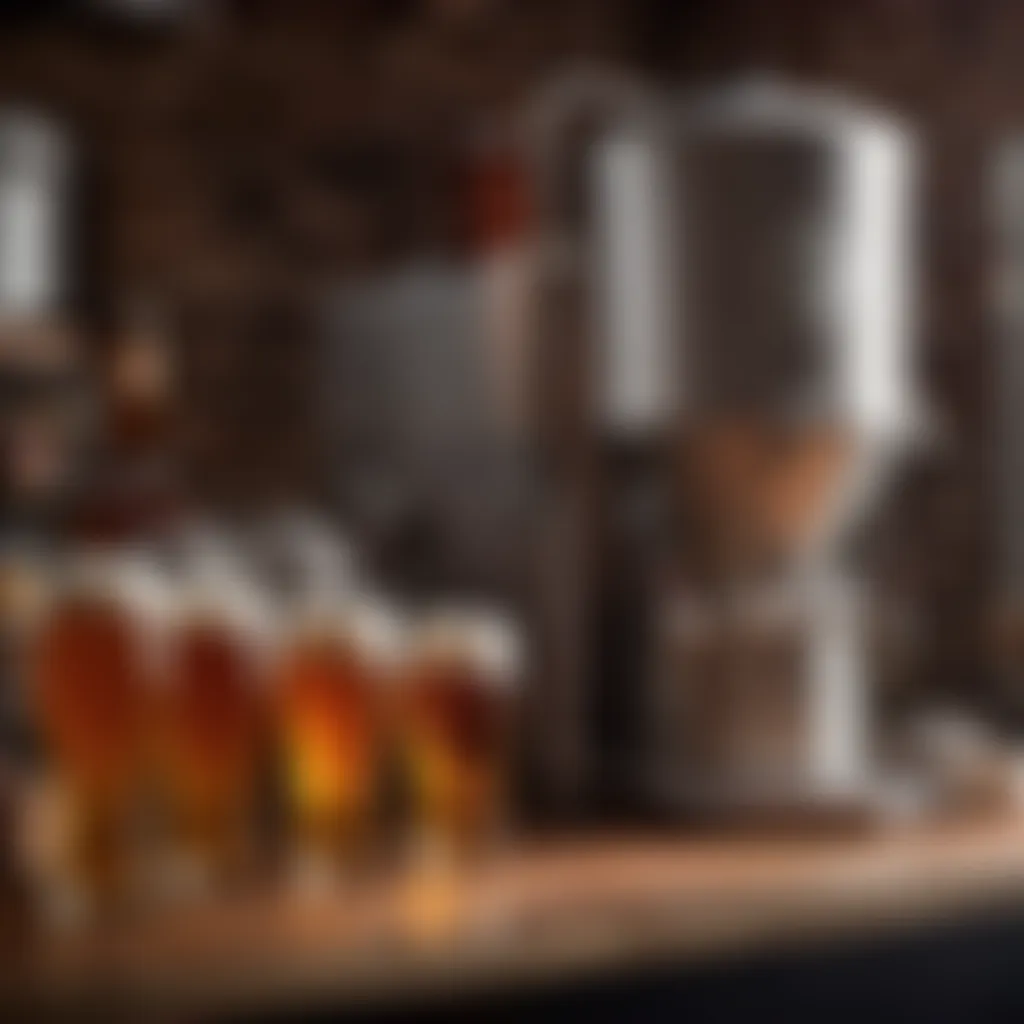
When it comes to brewing a distinctive India Pale Ale (IPA), the focus on ingredient selection can't be overstated. Each component you choose directly impacts the flavor, aroma, and overall character of the beer. The right balance of ingredients will not only highlight the unique qualities of your IPA but also ensure a successful brewing process. Whether you’re a novice trying your hand at crafting your first beer or a seasoned brewer refine your methods, understanding these ingredients is key.
Malt Selection
Base Malts
Base malts are the backbone of an IPA, laying the foundation for the beer's body and color. Typically, pale malts such as Pale Ale Malt or 2-Row Malt are chosen, providing sweetness to balance the hop bitterness. What sets these malts apart is their high diastatic power, which means they convert starches into fermentable sugars effectively. This attribute is particularly important for IPAs, as it helps produce a solid alcohol content without making the beer overly heavy.
A significant advantage of base malts is their versatility. They can be used in varying quantities to tweak both the flavor profile and the body of the beer. However, one must be careful not to overdo it; too much base malt can lead to a syrupy mouthfeel that may detract from the crispness expected from a well-crafted IPA.
Specialty Malts
Specialty malts contribute depth and complexity to your IPA. By incorporating a small percentage of Caramel or Crystal malts, brewers can add subtle notes of toffee, caramel, or even a hint of chocolate. This enhances the overall malt profile, providing a counterpoint to the hops that characterizes the style.
Another unique feature of specialty malts is their interplay with the hop character. With careful selection, they can elevate the beer’s sensory experience. However, too much specialty malt could overpower the delicate balance of an IPA, making it essential to strike the right mix.
Choosing Hops
Hop Varieties and Their Profiles
Hops are perhaps the most defining aspect of an IPA, contributing aroma, bitterness, and flavor. Varieties like Citra, Simcoe, and Cascade are popular due to their fruity and floral profiles. For instance, Citra hops can give your IPA a burst of citrus or tropical notes, appealing to many modern beer drinkers.
These hop profiles can be blended to create layers of complexity, ensuring that each sip reveals nuances of flavor. Additionally, the choices made in selecting hops can enhance the beer's aroma significantly, which plays a crucial role in the overall tasting experience. Yet, one must be wary of excessive bitterness; too many hops can make the beer unpalatable.
Timing and Methods of Addition
Understanding when to add hops during the brewing process is just as crucial as choosing them. Hop additions can be categorized into early, middle, or late additions in the wort boil. Early hops primarily contribute bitterness, while late additions are geared towards maximizing aroma.
This method of timing can drastically alter the final beer. Adding hops towards the end of the boil or even during fermentation can produce an intensely aromatic IPA full of vibrant hop characteristics. However, timing mistakes can lead to loss of desired flavors or an overly bitter brew, emphasizing the need for precision in the process.
Water Chemistry and Quality
Water might be the unsung hero of brewing, but it’s fundamental to creating a great IPA. The mineral content and pH levels of your water can significantly influence the final product. For instance, higher sulfate levels can accentuate hop bitterness, making the beer crisp and dry, while chloride can round out the malt flavors, providing smoothness.
Brewing water is often overlooked, but local water sources play a big role in how your beer ferments and tastes. Using filtered water or adjusting mineral content with ingredients like gypsum and calcium chloride is worthwhile for achieving the desired outcome in your IPA.
Yeast Selection
Ales vs. Lagers
When choosing the yeast, one must consider whether to use ale or lager yeast. For IPAs, ale yeast is most commonly used due to its temperature tolerance and its ability to produce both alcohol and flavor compounds effectively. The American Ale yeast strain, for instance, contributes fruity esters that complement hop aromas, making it a solid choice.
While lager yeast can produce a cleaner profile, it generally works better for styles with less hop emphasis. This means that ales are preferable, as they align more with the complex flavors generally found in IPAs.
Flavor Contribution of Yeast
Yeast isn’t just a fermentation agent; it adds flavor complexities to the beer. Different strains can impart unique characteristics such as fruity, floral, or even spicy notes. Choosing the right yeast strain can enhance the interactivity between the maltiness and hoppiness of the beer.
Some brewers choose particular yeast strains that bring out specific flavor notes, focusing on rounding out the overall profile of the IPA. However, one needs to be cautious; not all yeast can handle high hop levels while still maintaining their flavor integrity, so know your yeast's limits.
"Ingredients are the heart and soul of an IPA; without them, the brew lacks character and depth. Careful selection and balanced use will build a remarkable beer experience that is hard to forget."
The Brewing Process
Brewing an India Pale Ale isn't just about tossing some ingredients together; it is a carefully orchestrated process that requires understanding and precision. This section highlights the significance of the brewing process in achieving a top-notch IPA. Every step, from mashing to fermentation, contributes uniquely, impacting the flavor profile and overall quality of the beer.
A successful brewing process leads to the desired bitterness, aroma, and clarity that beer enthusiasts appreciate. The detailed techniques outlined here help ensure that even those new to brewing can produce a product that excites the palate.
Mashing Techniques
Temperature Profiles
Temperature profiles during mashing are crucial for converting starches into fermentable sugars. Each temperature range unlocks different enzymes that contribute to the final gravity of your beer. For example, mashing at a lower temperature, say around 149°F (65°C), will yield a drier beer because it favors beta-amylase enzymes, which produce fermentable sugars. Conversely, mashing at a higher temperature, like 158°F (70°C), encourages alpha-amylase activity, resulting in a fuller, sweeter beer.
This clever manipulation of temperature profiles makes it a popular choice among brewers who are keen on crafting their flavors. A unique feature of this strategy is its flexibility; brewers can experiment with various profiles to achieve the ideal balance they seek. However, it is worth noting that if the temperature is maintained incorrectly, it could lead to unwanted sweetness or a thin mouthfeel, which might not sit well with IPA enthusiasts.
Rest Periods
Rest periods during mashing serve a vital role in ensuring all starches are thoroughly converted. Following the initial mashing, allowing the mash to rest for a designated time enhances enzymatic activity. The key aspect here is that longer rest periods can lead to greater sugar extraction, giving the resulting beer well-rounded characteristics.
This approach is notably beneficial for brewers crafting complex flavor profiles, as it enhances the beer's potential and depth. Unique to this process is how creative brewers adapt their rest periods; some might choose to increase temperature gradually, entering the in-between zones that unlock even more flavor compounds. Nonetheless, those doing so should be wary of excessive timing, as it could cause unwanted over-extraction of tannins, leading to astringency.
Boiling the Wort
Hop Addition Strategies
When boiling the wort, hop addition strategies are essential for achieving the intended bitterness and aroma. By adding hops at different points during the boil, brewers can influence hop flavor in various ways. For instance, adding hops at the beginning contributes bitterness, while late additions—like just a few minutes before finishing—retain the delicate aromatics, which many IPA lovers revel in.
This technique allows brewing a complex and layered flavor. It’s crucial for an IPA, where hop-forward profiles are a hallmark. The unique aspect of hop addition strategies is that they cater to a range of brewing styles; by tweaking the timing or variety of hops, brewers can create an IPA that’s distinctively theirs. But there's a catch: overcooking hops or adding them too early can extract harsh bitterness, spoiling the beer’s intended profile.
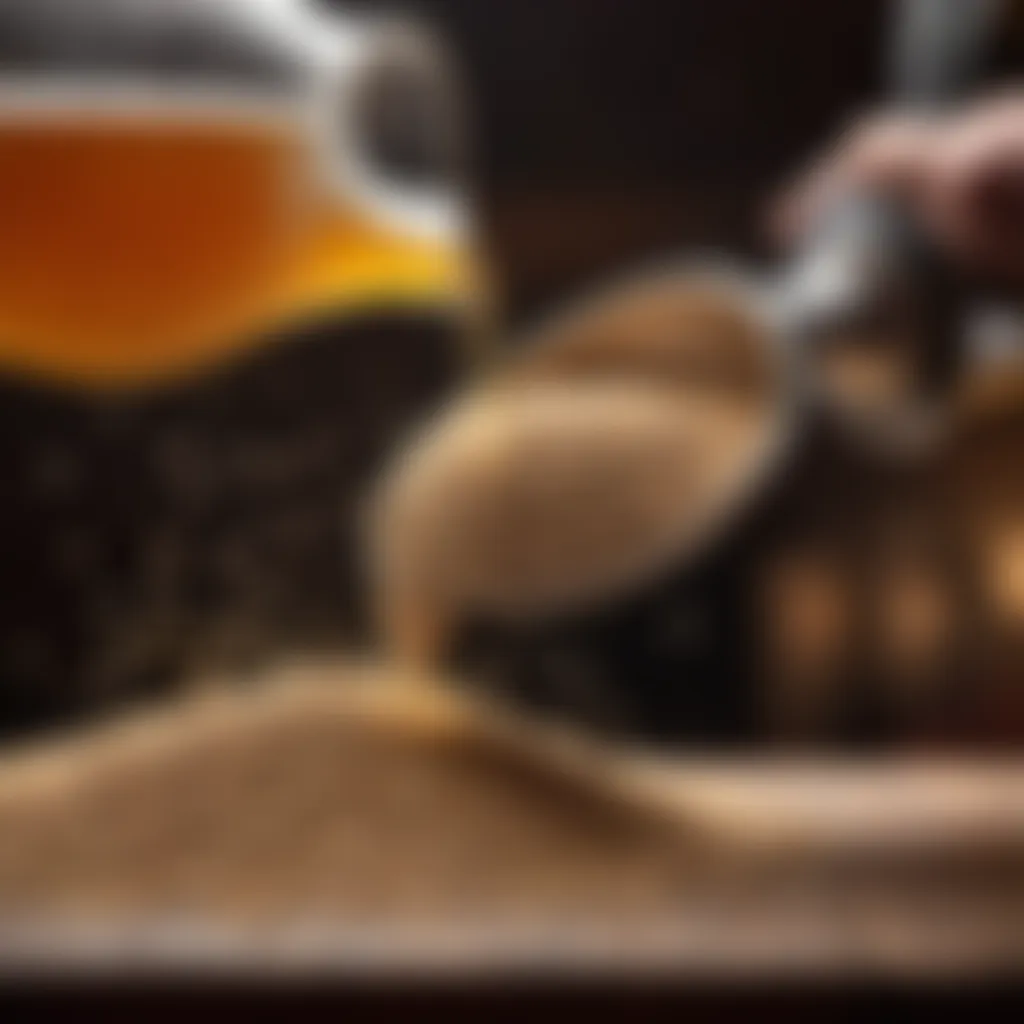
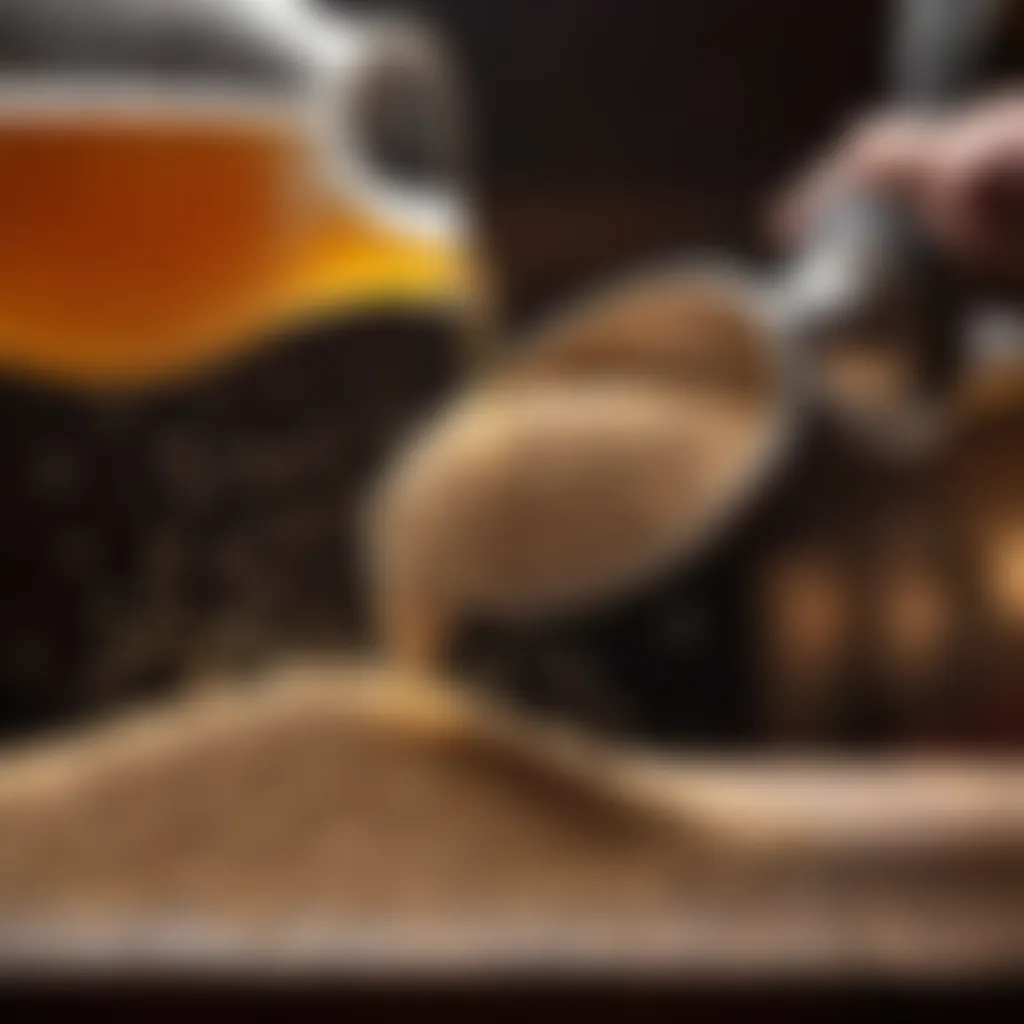
Maintaining Boil Quality
Maintaining boil quality is also a key part of brewing. A vigorous boil not only ensures that unwanted proteins and compounds that lead to off-flavors are broken down but also helps evaporate undesirable volatile compounds. The key characteristic of sustaining a steady boil is that it helps maintain consistent temperatures, leading to even wort exposure to hops, which is important for efficient extraction.
A unique feature to this strategy involves monitoring how the wort interacts with the kettle. Adjustments might be needed based on the heat source or kettle shape. This diligence can lead to some advantages, including a refined flavor profile and improved hop utilization, while negligence might result in a hazy brew or other undesirable characteristics.
Fermentation Process
Fermentation Temperature
Temperature during fermentation significantly influences yeast activity and, ultimately, the beer’s flavor. Different yeast strains thrive at distinct temperatures, impacting ester and phenol production. For example, fermenting a typical IPA at around 68°F (20°C) usually yields fruity esters, while a cooler fermentation might produce a cleaner flavor profile.
Using the right fermentation temperature is paramount for developing the specific taste associated with IPAs. A unique aspect is how it can also dictate the clarity of the final product—higher temperatures can sometimes lead to cloudiness due to byproducts. The downside of not monitoring this aspect could result in off-flavors, making it less appealing.
Duration and Monitoring
Understanding the duration of fermentation is important for achieving the desired final product. Typically, IPA fermentation can take five to ten days, depending on the yeast strain used and the target profile. Regular monitoring during this phase allows brewers to catch any anomalies, such as unusual bubbling or sediment build-up, enabling them to take corrective measures early.
This proactive approach can help avoid common fermentation issues, making it a beneficial practice. One of the unique features of this is the extent to which brewers develop personalized fermentation timelines, often adjusting them based on previous batches. However, being too hasty in the process may lead to incomplete fermentation, hampering flavor development and stability.
Post-Brewing Techniques
Once the hard labor of brewing an IPA is completed, it’s time to transition into the world of post-brewing techniques. While earlier stages such as mashing and fermentation get their fair share of attention, the post-brewing phase is crucial too. This stage defines not just how your beer tastes, but also its overall quality, shelf life, and the experience it delivers to those who drink it.
Conditioning the Beer
Conditioning is akin to allowing fine wine to breathe. It lets your IPA mature and helps in refining its flavors. This step typically involves holding your beer at a controlled temperature for a few weeks, allowing unwanted flavors to dissipate while desirable tastes mellow and intertwine. For instance, when you taste that sharp, hoppy bitterness in a freshly brewed IPA, it’s often overpowering. After a proper conditioning period, that bite becomes more balanced, rounded off by smoother, subtler notes.
The right atmosphere for conditioning can make all the difference. Ideally, a dark, cool place helps maintain the integrity of the flavors. Skimping on conditioning might lead to a vibrant taste, yes, but it might also present a raw, unsettling profile, one that could chase away potential beer enthusiasts.
Carbonation Methods
Carbonation can be an essential factor in an IPA; it directly influences the beer's mouthfeel and psychological perception of freshness.
Natural Carbonation
Fascinatingly, natural carbonation relies on the fermentation process, where yeast consumes sugars and releases carbon dioxide. This is a method often favored by traditional brewers. It’s pretty much a slow dance that allows the flavors to develop profoundly while adding a sprightly effervescence.
The beauty of natural carbonation lies in its subtlety. It often leads to a creamier mouthfeel, which can complement the IPA’s hop profile beautifully. This method can take longer than others, but some brewers argue that waiting is worth it for that uniquely rich flavor you gain over time.
However, a couple of downsides exist. Inexperience in managing fermentation could lead to inconsistencies in carbonation levels or, worse, over-carbonation that could ruin the product.
Forcing Carbonation
On the flip side, we have forcing carbonation—a method used often for its efficiency. By injecting CO2 directly into the beer, brewers can achieve desired carbonation levels in a timely manner. This method suits busy brewers or those looking to get their products out quickly to the market.
What’s interesting here is that it doesn’t necessitate a traditional fermentation process post-brewing. You control the results much more, aiming for standardization rather than organic development. This element makes it a suitable choice for many commercial ventures.
However, forcing carbonation can sometimes lack the depth of flavor you get with natural methods. The immediacy might be appealing, but is it worth compromising on taste? That’s the brewing conundrum many find themselves pondering.
Kegging vs. Bottling
The final thought in this post-brewing examination revolves around kegging and bottling, two different methods of storage and serving. Kegging tends to be more convenient for those looking to benefit from ease of use and quick dispensing. Kegs can be tapped for events or personal parties without the hassle of bottle preps. However, it takes away some charm that comes with a lovingly poured bottle of craft beer.
Meanwhile, bottling allows for a more personal experience. Each bottle is a little piece of art, a tangible token of the time spent forming your perfect IPA. Yet, bottles can be bothersome due to the cleaning and capping required. Each method has its pros and cons, and the choice ultimately aligns with how you wish to enjoy and share your crafted brew.
"Conditioning, carbonation, and the choice of storage—just like in life, the best outcomes come from the right steps taken after the initial fervor of creation."
Understanding these post-brewing techniques is essential for anyone serious about their IPA journey. By taking the time to condition expertly and choosing your carbonation and storage wisely, the result can transform from a simple brew into a distinctive, enjoyable experience.
Tasting and Evaluating Your IPA
Tasting and evaluating your IPA is not just an exercise in flavor; it’s a crucial part of the brewing process that can elevate your craft brewing experience. Understanding the nuances of your brew provides insight into the ingredients you've chosen and the techniques you employed. This section aims to unlock the secrets behind truly appreciating your IPA's character. By mastering the art of tasting, brewers gain valuable feedback that informs future attempts and hones their skills. The whole point is to enhance the joy of enjoying your brew while strengthening the communal ties among beer aficionados.
Flavor Profile Analysis
Identifying Aromas
Aromas are the first thing to hit you before you even take a sip. They set the tone, hinting at what lies ahead in flavor. The specific aspect of Identifying Aromas is critical, as it gives you a glimpse into the hop varieties and malt profiles that may shape the beer. A key characteristic is the ability of aromas to evoke feelings and memories—think of a floral IPA with hints of citrus, which can transport you to a sun-lit orchard.
The aromas can be diverse; pine, resin, grapefruit, or even tropical fruit can dance in the air. This makes Identifying Aromas a popular choice among beer enthusiasts because it enriches the overall tasting experience. Unique features like hop selection impact aromas directly. However, not every aroma is pleasant, as off-smells can occur, pointing to issues in the brewing process. Understanding this can refine your future brews by helping you discern what works well and what doesn't.
Taste Characteristics
Movement from aromas to taste characteristics brings the experience to your palate. This aspect includes a spectrum ranging from bitterness to sweetness, and a well-crafted IPA harmonizes these elements beautifully. Highlighting Taste Characteristics gives one the chance to reflect on how flavors unfold in your mouth, whether they invite a dance of citrus zest or a more subdued, earthy note. This is crucial in determining the success of your brewing endeavor.
Taste characteristics matter greatly because they tell you if your balance is right or if your brew leans too much in one direction. A unique feature here is the lingering aftertaste, which can either leave a pleasant memory or a bitter one. This indicates how well you've crafted your IPA and is a clear advantage when it comes to improvement.
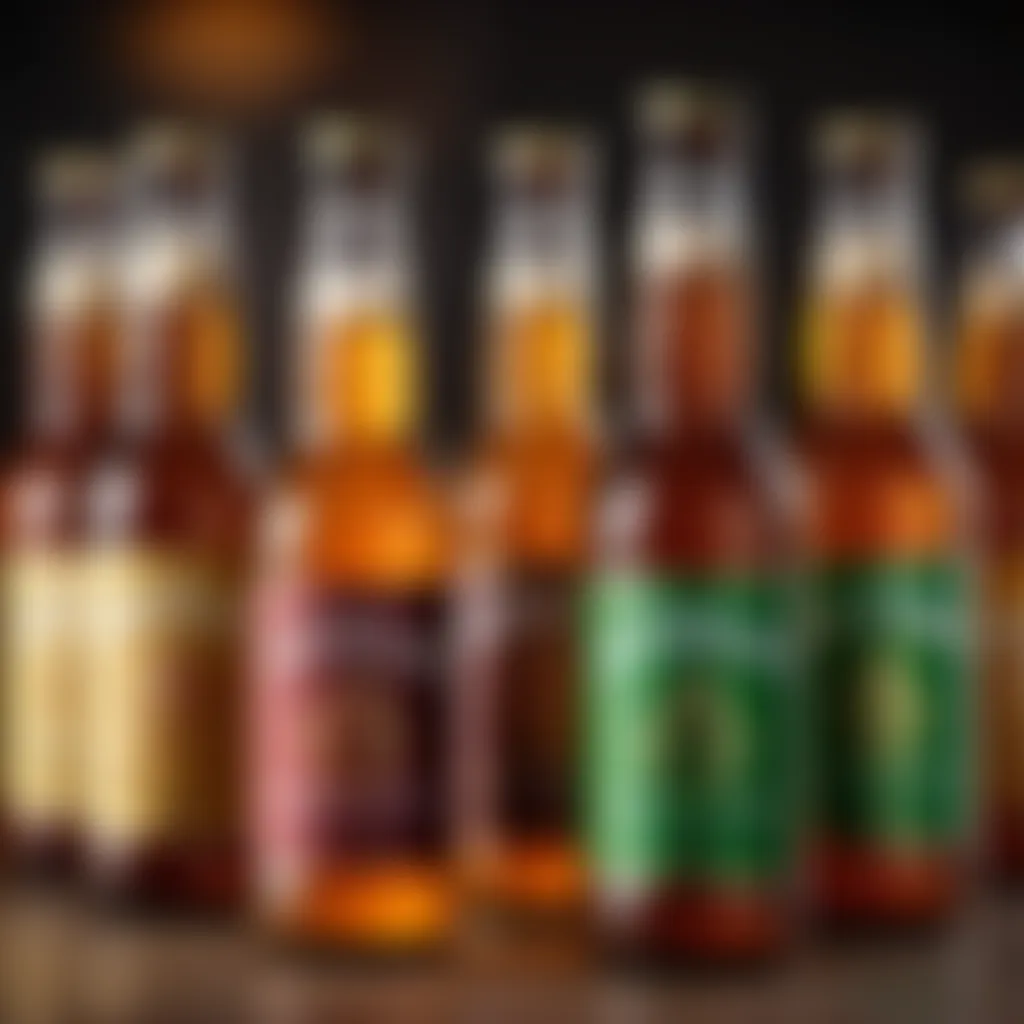

Visual Inspection
Color and Clarity
Your brew's color gives immediate feedback about the malt selection and the brewing process itself. A specific aspect of Color and Clarity contributes not just visually but also emotionally; a vibrant amber hue might invite a feeling of warmth and rustic charm. The brightness of the beer indicates freshness which is important. Key characteristics also include transparency: a clear beer often signifies meticulous brewing.
Incorporating this subject is beneficial—it’s the first impression of the beer, even before the taste comes into play. Color and clarity can tell tales of over-extraction or inadequate filtration methods. If your IPA looks murky, it might lead to questions about its quality. Thus, clear clarity can be a source of pride for many brewers.
Head Retention
Head retention is another visual cue you shouldn’t overlook. It pertains to how well the foam holds atop your beer after pour—a sign of good carbonation and proper ingredients. The specific aspect of Head Retention signifies the preservation of carbonation, which enhances the drinking experience. An impressive head can also carry the beer's aromas toward your nose—a beneficial feature that adds layers to the tasting journey.
The unique advantage of a good head is that it not only impacts aesthetics but also influences the first sips, as the foam can contain aromatic compounds that enrich the flavor. However, if it dissipates too quickly, it might indicate an issue such as too much malt sugar or improper carbonation. Hence, tracking head retention can illuminate aspects of the brewing process that require adjustment or refinement.
Mouthfeel Assessment
Mouthfeel is often the unsung hero of beer tasting. It includes texture and weight, describing how the beer feels as it glides over your palate. Assessing the mouthfeel can unlock details about body, carbonation, and a beer's overall experience. Think of an IPA that feels crisp and light versus one that carries a thicker, creamier body. Each brings a different experience, allowing for unique impressions with every sip.
Mouthfeel adds a layer of complexity to the tasting experience, influencing not just flavor but entire enjoyment. So whether it's a light, carbonated finish or a more viscous mouthful, never underestimate this aspect. The interplay between mouthfeel and taste can elevate your understanding of what makes a beer 'perfect' for you.
By tasting and evaluating your IPA, you engage in a dialogue with the craft, allowing for personal growth and a deeper connection to the brewing community.
Troubleshooting Common Issues
When endeavoring to craft the perfect IPA, encountering obstacles is part and parcel of the brewing experience. Understanding how to troubleshoot common issues can not only save your batch but also enhance your brewing skills over time. By honing your ability to identify and resolve these complications, you ensure that the final product aligns closely with your vision. Moreover, facing these challenges often results in a deeper appreciation for the art and science of brewing.
Off-Flavors and Their Causes
Off-flavors can be a real dampener on an otherwise stellar brew. These unpleasant tastes may stem from various sources, including yeast stress, fermentation problems, or ingredient issues. Some common culprits include:
- Infection: Wild yeast or bacteria can introduce sour or funky flavors. Keeping your equipment impeccably clean is essential.
- Heat: Excessive temperatures during fermentation can lead to esters or fusel alcohols that don’t belong in an IPA.
- Oxidation: Allowing your brew to be exposed to oxygen can impart cardboard-like or stale flavors.
To mitigate these issues, always pay attention to sanitation, maintain consistent fermentation temperatures, and minimize exposure to air after fermentation. This scrutiny could be the difference between a mediocre ale and a true masterpiece.
Cloudiness and Clarity Problems
A crystalline appearance may seem trivial, but clarity can significantly impact perception. A hazy IPA isn't necessarily bad; some styles embrace this cloudiness, but any unexpected turbidity calls for investigation. The causes of unwanted haziness can include:
- Protein Fallout: Insufficient or improper conditioning might leave proteins suspended in your brew.
- Hop Residue: A heavy hop addition can lead to a murky brew if not adequately filtered or settled.
- Yeast: Some yeast strains do not flocculate well, meaning they don’t settle out, thus leaving a cloudy final product.
Addressing clarity involves fine-tuning your process. Consider using fining agents or adjusting your yeast selection based on your desired clarity. With a little patience and attention, achieving a clear brew is possible.
Carbonation Issues
Carbonation can be the finishing touch that transforms a good beer into a great one, but it can also lead to headaches if not properly managed. Problems can manifest as either over-carbonation or flatness, both of which indicate underlying issues. Common mistakes include:
- Incorrect Priming Sugar Amount: Using too much sugar while bottling can lead to over-carbonation, resulting in gushing beers. Conversely, too little will leave your brew lifeless.
- Temperature Fluctuations: Cold temperatures can hinder the fermentation of priming sugar, leading to a flat beer.
- Capping Problems: If bottles aren’t sealed tightly, carbonation will escape, making your brew lose its fizz.
To improve carbonation consistency, meticulously measure your priming sugar and monitor temperatures during the fermentation process. Ideally, you should allow bottles to condition at a stable temperature for a couple of weeks.
Understanding these common pitfalls is half the battle in brewing a successful IPA. With every challenge you face, your brewing prowess becomes a little sharper.
Final Thoughts
As we wrap up this dive into the world of India Pale Ales, it’s crucial to reflect on what has been covered and how it applies to your brewing journey. This article has illuminated the various aspects of crafting the ideal IPA, from ingredient selection to the subtleties of taste evaluation. But beyond the specifics, the overarching theme here emphasizes a continuous evolution in brewing practices.
Beer brewing is not just a one-time affair; it’s a lifelong passion that invites you to constantly learn and grow. Understanding that each brew offers an opportunity for improvement is essential. Every batch you create is a stepping stone towards mastery. Whether it’s adjusting your hop combination or tweaking fermentation temperature, the goal remains the same: to refine your craft and elevate your brews.
Moreover, embracing the community aspect of brewing can deeply enrich your experience. Sharing insights, challenges, and successes with fellow enthusiasts can lead to valuable feedback and new ideas. So, take the time to network with others who share your passion. Participating in local brewing clubs, online forums, or even social media platforms can foster a vibrant dialogue about techniques, equipment, and recipes.
Brewing is as much about the journey as it is about the end result.
Ultimately, these final thoughts serve as a reminder that every brew tells a story, and it’s up to you to make it memorable. So, prepare your ingredients, roll up your sleeves, and dive back into the world of homebrewing with a refreshed perspective and enthusiasm. Cheers to many successful batches ahead!
Continual Improvement in Brewing
Continual improvement in brewing isn't just about perfecting a recipe or tweaking the water chemistry; it’s about adopting a mindset of curiosity and exploration. Each brewing session is an opportunity to discover what works and what doesn’t. A recommended approach is to keep a detailed brewing journal.
Documenting everything—from the quantities of your ingredients to the specific temperatures during mashing—allows you to track your progress. This record will be invaluable for making adjustments in future brews. Additionally, don’t shy away from experimenting with new techniques or ingredients. If something piques your interest, go ahead and give it a shot! You might stumble onto a flavor profile that becomes your new favorite.
- Reflect on Past Brews: Taste your previous batches and assess what you liked and disliked about each.
- Adjust and Experiment: Small changes can lead to big differences. Try varying your hopping methods or even the type of malt used.
- Seek Feedback: Don’t hesitate to share your brews with friends or fellow brewers for constructive criticism.
- Stay Informed: Keep reading and researching. The brewing world is constantly evolving.
The Community Aspect of Brewing
Never underestimate the power of a good community in your brewing journey. Engaging with others who share your passion can provide not only motivation but also valuable lessons.
Local homebrew clubs are a treasure trove of knowledge. Not only do they offer feedback on your creations, but they often hold tasting events where you can sample a variety of styles. Likewise, online communities, such as forums on Reddit or Facebook groups dedicated to homebrewing, can connect you with seasoned brewers from around the world. Here’s where you can ask questions, find inspiration, and share your own experiences.
Moreover, collaborative brewing can be a fun way to learn. Partnering up with someone more experienced can open your eyes to new techniques and practices. Plus, it’s a great excuse to socialize and enjoy a cold brew together!
- Attend Workshops: Many local breweries offer classes or workshops for novice brewers.
- Participate in Competitions: Testing your skills against your peers can push you to improve.
- Explore Online Resources: Websites like Wikipedia or Britannica provide extensive information on beer styles and brewing methods.
In summary, brewing isn’t simply a solitary activity; it’s an opportunity to connect, collaborate, and grow. Happy brewing!







